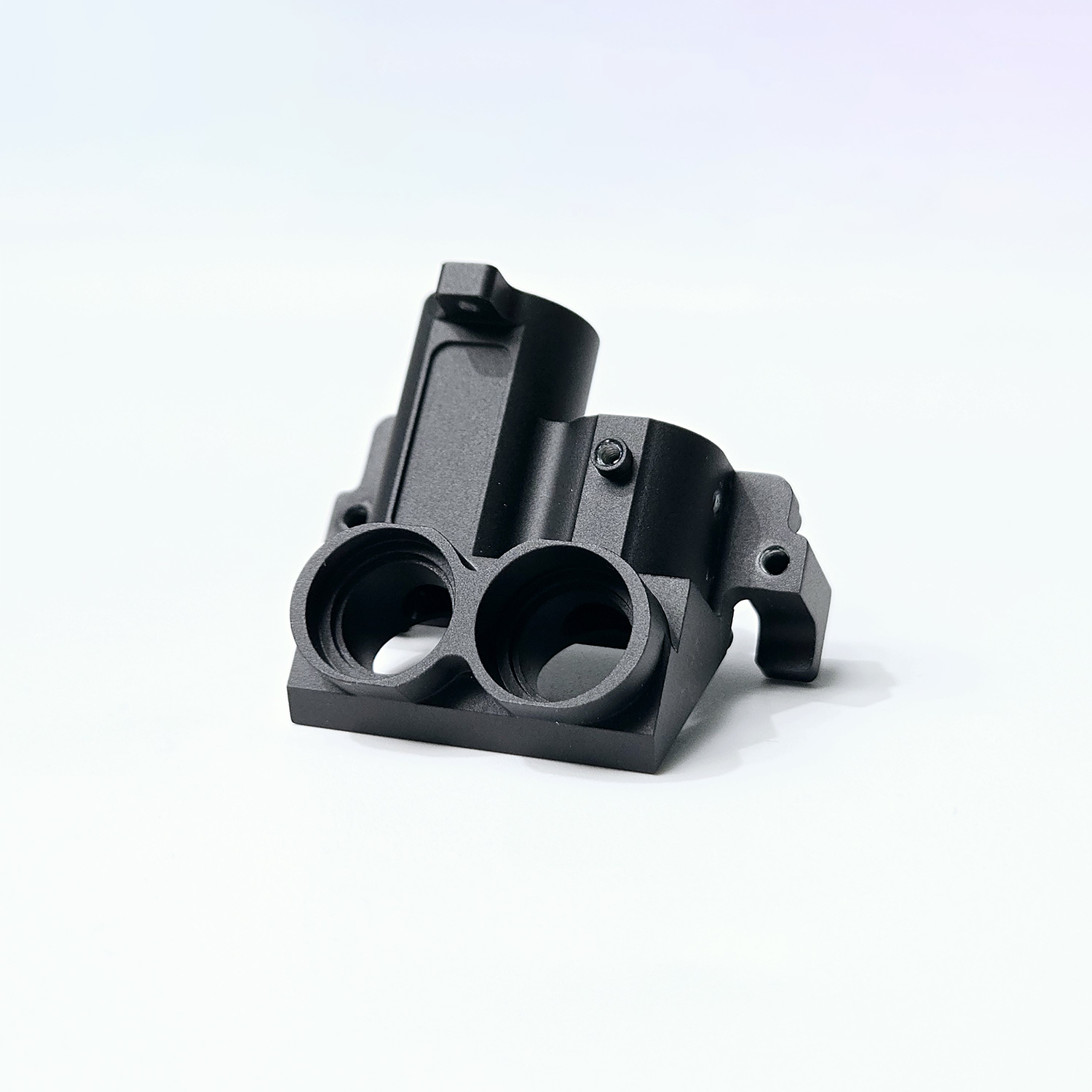Advantages of Rapid CNC Machining for Short-Production Cycles in Manufacturing
Accelerating Time-to-Market with Rapid CNC Machining

Understanding Rapid CNC Machining in Modern Manufacturing
Fast CNC machining takes advantage of computer controlled accuracy and smoother production processes to make complicated parts in just hours rather than taking weeks. Traditional approaches often need special tools made specifically for each job, while modern systems rely on multi axis machines that handle design modifications much quicker. Some high speed CNC setups now spin at over 60 thousand RPM, which cuts down on aluminum prototype time by about half compared to older machines according to recent industry data from Machining Trends Report 2025. These advanced capabilities have become pretty much necessary in industries like aerospace manufacturing and car production where quick turnaround times matter most.
How Faster Production Cycles with CNC Machining Reduce Time-to-Market
Manufacturers are cutting down on product development times significantly these days. Some reports suggest they've managed to shorten entire cycles by around 35%. Take one medical device firm for instance. They slashed their prototype testing phase from what used to take three whole weeks down to just three days thanks to fast CNC machining techniques. The trend is pretty widespread actually. According to IndustryWeek's latest findings from 2024, nearly seven out of ten manufacturers see getting products to market quicker as essential for staying ahead in today's competitive landscape.
The Shift Toward High-Speed CNC Machining for Rapid Prototyping
Modern prototyping relies heavily on high speed CNC machining because it can hold really tight tolerances around plus or minus 0.005 mm even when running at higher speeds. The latest CAM software has made a big difference too, as it figures out better tool paths that cut down machining time somewhere between 30% to maybe 45%, all while wasting less material overall. Take this automotive company for instance they switched their crash test prototypes from 3D printed parts to ones made via CNC machining and ended up saving hundreds of thousands each year. Not only did they save money, but the machined parts lasted longer and were just plain more accurate for what they needed.
Case Study: Automotive Supplier Cuts Development Time by 40% Using Rapid CNC
A Tier 1 automotive supplier reduced brake component development from 14 weeks to 8.5 weeks through:
- 5-axis simultaneous machining enabling complex geometries in single setups
- Real-time tool wear monitoring preventing quality defects
-
Automated post-processing integrated into the CNC workflow
This approach eliminated 18 days of manual rework annually and improved dimensional accuracy by 23% over legacy methods.
Automation and Efficiency in CNC Production Cycles Enable Scalability
Modern CNC systems achieve 89% equipment uptime thanks to robotic pallet changers for 24/7 lights-out production, predictive maintenance algorithms that reduce unplanned downtime by 67%, and cloud-based monitoring that detects deviations in under 0.5 seconds. These capabilities allow scalable short-run manufacturing without sacrificing precision€”ideal for startups validating designs before mass production.
Reducing Lead Times Through Advanced CNC Technologies and Operations
Reduction in Lead Times Through Advanced CNC Technologies
Multi-axis capabilities and adaptive toolpath optimization in modern CNC systems reduce lead times by 30€”50% compared to conventional methods (Frigate 2025). AI-driven controllers enable higher material removal rates while maintaining ±0.005 mm tolerances, eliminating delays caused by manual rework.
Minimized Turnaround Time and Enhanced Productivity in Short-Run Production
Automated tool changers and pallet shuttle systems cut non-cutting time by 65%, allowing small batches to move from CAD to finished parts in under 72 hours. One 2023 automotive case study showed optimized workflows reduced fixture setup from 8 hours to 45 minutes, increasing monthly output by 300 units.
Integration of Real-Time Monitoring to Further Compress Cycle Times
| Technology | Cycle Time Improvement | Error Reduction |
|---|---|---|
| IoT sensors | 18% faster spindle adjustments | 42% fewer defects |
| Predictive analytics | 22% shorter tool change intervals | 37% less scrap |
| Cloud-based dashboards | Real-time RPM optimization | 89% OEE improvement |
These systems analyze over 15,000 data points per minute, enabling micro-adjustments that prevent cycle drift during extended runs.
Leveraging 24/7 Operation and Continuous Production With CNC Machines
Unattended machining powered by automated material handling and tool-life monitoring achieves up to 95% machine uptime. Facilities using modular workholding report 40% faster job changeovers, supporting true lights-out manufacturing for urgent orders.
Streamlining Design-to-Production Workflow with CAD-CAM Integration
Use of CAM Software for Streamlined CNC Programming
Modern CAM software reduces manual programming effort by up to 70%, allowing engineers to generate toolpaths directly from digital models. This automation eliminates translation errors and ensures precise, delay-free execution on the shop floor.
CAD-CAM Integration for Faster Design Iterations and Error Reduction
Seamless integration between CAD and CAM enables real-time updates€”design changes automatically update machining parameters. According to a recent manufacturing efficiency study, integrated workflows reduce prototype errors by 52% compared to manual transfers, enabling teams to iterate three times faster and compress development phases from weeks to days.
Flexibility for Design Changes Without Tooling Delays in Rapid CNC
Integrated systems support late-stage design modifications without restarting programming. When geometry updates sync instantly with CAM software, manufacturers save 8€”12 hours of setup time per revision. This agility is critical, as 83% of rapid CNC projects require at least three post-approval design adjustments.
Balancing Speed and Quality: When Digital Workflows Outpace Quality Control
While automation accelerates production, 34% of manufacturers report inspection bottlenecks due to unchecked design changes. Leading facilities now combine CAD-CAM integration with in-process monitoring, using sensors to verify dimensional accuracy during machining. This dual strategy maintains ISO 9001 compliance while achieving 22% faster project completion versus traditional approaches.
Ensuring High Precision and Consistency in Short-Batch Production
CNC Prototyping Precision and Consistency Across Repeated Runs
CNC machining at high speeds can achieve really tight tolerances around plus or minus 0.005 inches thanks to closed loop feedback systems and those fancy tool path calculations. What's interesting is how this level of accuracy stays pretty much the same whether someone needs just five parts or as many as 500. We saw this happen during some tests in the aerospace industry where nearly all titanium brackets (about 98%) passed the tough MIL-STD-1916 requirements. Manual methods just can't match this because they don't have built in ways to adjust when tools start wearing down over time. CNC machines actually measure themselves with lasers and make tiny corrections automatically so every part comes out looking almost identical to the last one.
High Precision and Consistency Ensure Compliance in Regulated Industries
The medical field and auto manufacturing depend heavily on fast CNC machining processes to satisfy those strict standards like ISO 13485 and IATF 16949. According to research published by NSF International last year, spinal implants made through CNC methods showed about 83 percent fewer surface flaws compared to traditional casting techniques. For parts subject to FDA regulations such as insulin pump casings, real time monitoring systems pick up even tiny variations down to 15 microns. These pumps need to stay completely sealed against leaks, maintaining rates under 0.001 milliliters per minute throughout their entire lifespan in the body.
Case Study: Medical Device Startup Achieves ISO Certification Using Rapid CNC
One surgical instrument maker managed to get their ISO 13485 certification done 14 months ahead of schedule thanks to fast CNC machining combined with built-in CMM checks. When they put automated inspection systems in place, measurement mistakes after machining dropped dramatically - around 79% fewer errors overall. They also got complete tracking for all 12 different stainless steel instruments they produce. What really made a difference was getting rid of those CMM bottlenecks. Before this change, quality docs took nearly two whole days to complete for each batch. Now it's down to just six hours, which makes a huge difference when trying to meet tight production deadlines in medical device manufacturing.
Cost-Effectiveness of Rapid CNC Machining for Small Production Runs
Cost-effectiveness of CNC for small batches vs. traditional tooling
Rapid CNC machining eliminates expensive molds and specialized tooling required in injection molding, reducing upfront costs by up to 85% (Manufacturing Trends 2023). Since CNC transitions between designs digitally, manufacturers can produce batches as small as 10 units without retooling delays.
| Production Factor | Rapid CNC Machining | Traditional Tooling |
|---|---|---|
| Minimum Viable Batch Size | 10€”100 units | 1,000+ units |
| Tooling Setup Cost | $300€”$1,500 | $8,000€”$25,000 |
| Lead Time for Setup | 2€”8 hours | 4€”12 weeks |
Minimized setup time reduces overhead in rapid CNC operations
Advanced CNC systems complete toolpath programming and fixturing in under 3 hours€”versus 1€”2 weeks for conventional methods. This efficiency frees up 20€”30% more machine time for active production, significantly lowering labor and energy costs per unit.
Strategy: Balancing automation, reduced downtime, and operational costs
Top manufacturers pair automated tool changers with predictive maintenance to achieve 95% machine uptime, reducing per-part costs by 40% in short runs. As highlighted in a recent industry analysis, combining real-time performance tracking with Just-in-Time material sourcing cuts waste by 60% while maintaining ISO-grade precision.


